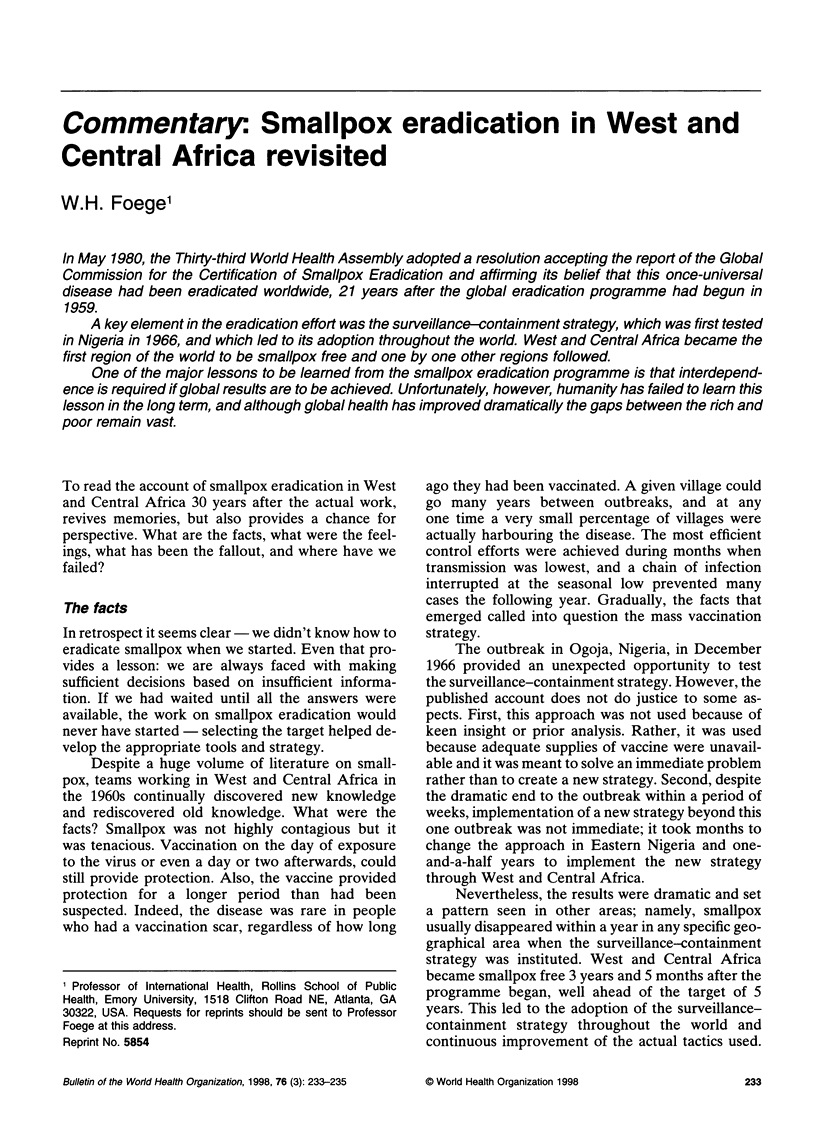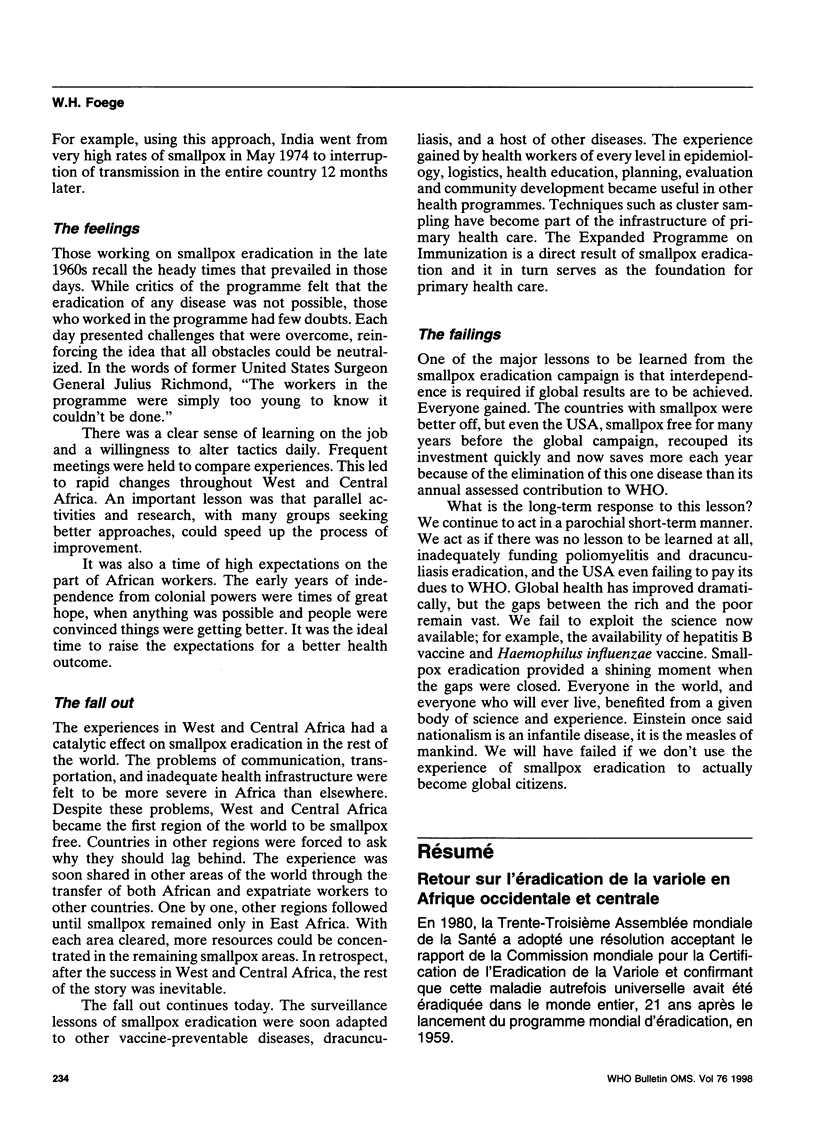Abstract
In May 1980, the Thirty-third World Health Assembly adopted a resolution accepting the report of the Global Commission for the Certification of Smallpox Eradication and affirming its belief that this once-universal disease had been eradicated worldwide, 21 years after the global eradication programme had begun in 1959. A key element in the eradication effort was the surveillance-containment strategy, which was first tested in Nigeria in 1966, and which led to its adoption throughout the world. West and Central Africa became the first region of the world to be smallpox free and one by one other regions followed. One of the major lessons to be learned from the smallpox eradication programme is that interdependence is required if global results are to be achieved. Unfortunately, however, humanity has failed to learn this lesson in the long-term, and although global health has improved dramatically the gaps between the rich and poor remain vast.
Full text
PDF




